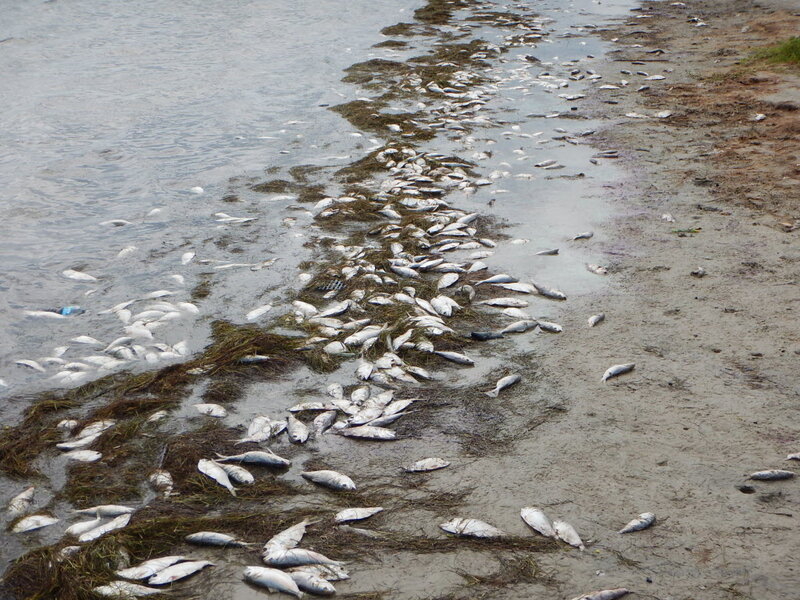What's making all those fish off Florida's coast die?
Loading...
An explosion of algae in southwest Florida has killed thousands of fish big and small and caused a terrible smell to permeate the area in the past week during Florida’s annual autumn red tide.
Concentrated in Sarasota and Manatee counties, the affects of the red tide, have been felt across the southwest coast of Florida causing tourists to abandon the beaches and local businesses to suffer. Meanwhile the Florida Fish and Wildlife Conservation Commission (FWC) has been testing water samples along the coast in order to document and collect more information on the phenomenon.
“Right now we only have a couple of patches of high concentration,” Kelly Richmond, a spokesman for the FWC, told the Herald Tribune. “You go to one beach, it could be high. You go to another beach down the road, it might be lower.”
The proliferation of harmful algae blooms typically damages ecosystems either directly by releasing toxins into the water and air or indirectly by throwing off the balance of the ecosystem through oxygen depletion. Karenia brevis, which typically infects waters off the coasts of Florida, Texas, and Mexico, is an example of the former.
In addition to killing fish, the toxins can also harm marine birds and mammals, according to Kaitlyn Fusco of the More Marine Laboratory in Sarasota. But this is all expected, Ms. Fusco told WTSP News, “typically in the fall into the winter we will see red tide blooms.”
Some have questioned whether sewage overflow from this summer’s storms could have contributed to the bloom, as poor water quality has been known to exacerbate algae blooms and kill off a wide variety of fish.
“Large fish kills are often a sign that more needs to be done to restore water quality in estuaries," Doug Rader, the chief oceans scientist for the Environmental Defense Fund, told The Christian Science Monitor's Christina Beck in August. "It is a normal occurrence, but it is exacerbated by human impact.”
Hayley Rutger from the Mote Marine Laboratory said that the Florida red tide algae occurs naturally in the Gulf of Mexico, and its blooms usually form offshore, away from coastal nutrient sources. However, human-made and natural nutrients from the coast can affect blooms that move close to shore. [Editor's note: Dr. Rutger's comments were expanded from a previous version to clarify the nuances of harmful algae blooms.]
Strong winds can stir up the toxins produced by the algae and lead to harmful air pollution.
While the beaches remain open, the FWC recommends that beachgoers not take their pets to the beach and that swimmers rinse off after going in the water. The FWC has also asked residents of southwest Florida to report any fish kills, particularly in Sarasota and Manatee Counties.








